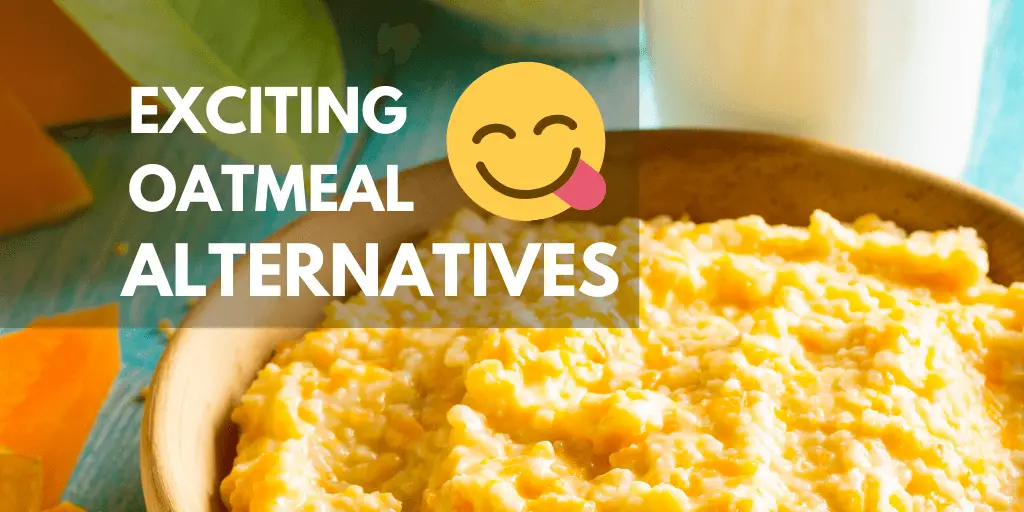Quick, Nutritious, And Delicious Grains To Use As Oatmeal Alternatives.
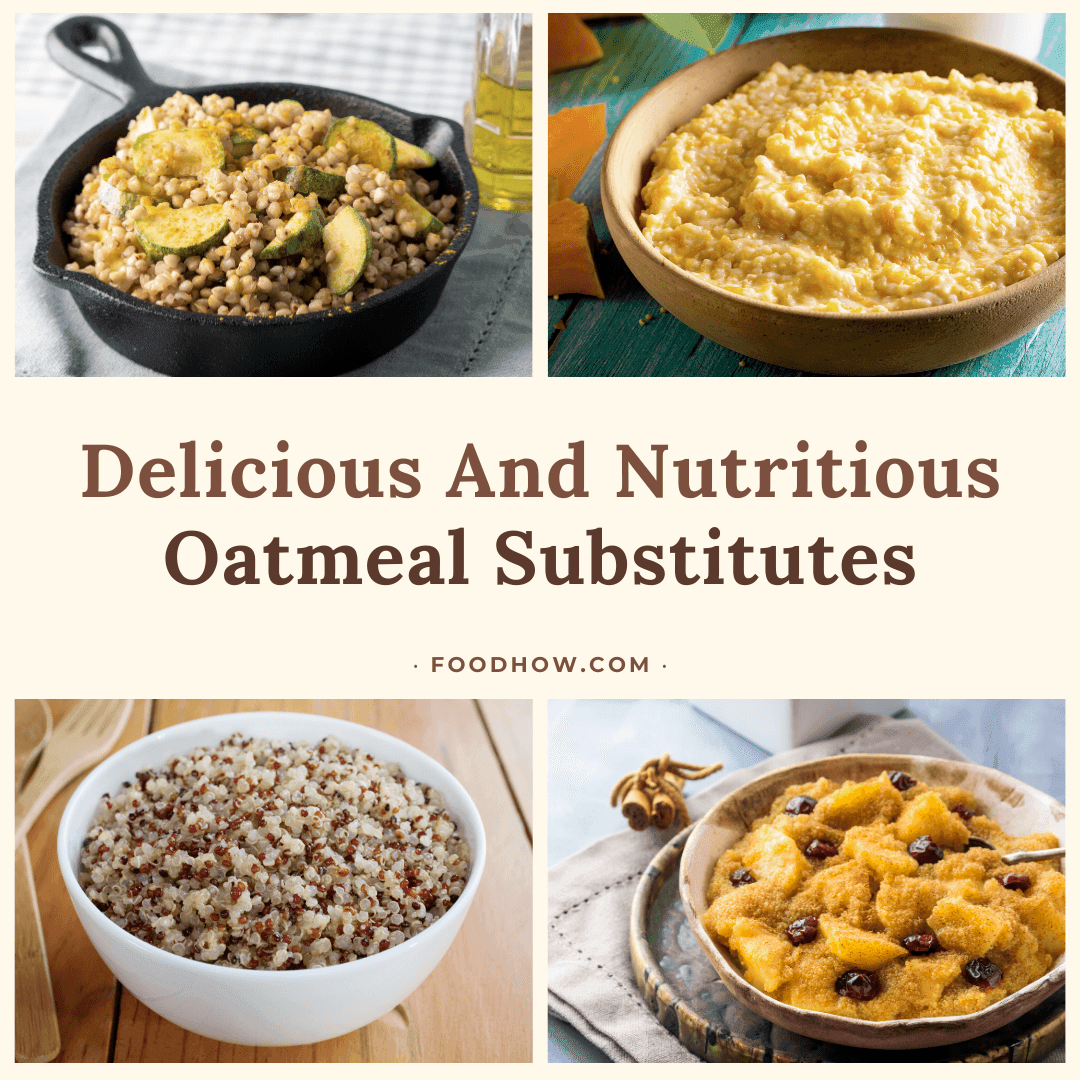
Oats are packed full of nutrients: vitamins, minerals, and low-glycemic carbs, they are high in fiber, and low in fat, and they can keep you feeling full for longer and nourish your body. If that wasn’t enough, they’re also a delicious way to start your day.
But, oats aren’t the only way to get a healthy serving of tasty grains for breakfast. There are some great, and perhaps even more nutritious Oatmeal Alternatives to try.
There are plenty of whole grains around, in various forms. Mixing these up can offer you unique blends of taste, texture, and nutrition.
Whole grains contain complex carbs, and these take longer to digest than their more refined cousins. This keeps your blood sugar level in check, along with your hunger pangs.
They can also reduce your LDL levels – the ‘bad’ cholesterol – and reduce your heart disease and diabetes risk.
Here are 9 of the best rolled whole-grain alternatives to oatmeal:
Table of Contents1. Buckwheat2. Millet3. Quinoa4. Brown Rice5. Spelt6. Barley7. Amaranth8. Rye9. Triticale
1. Buckwheat
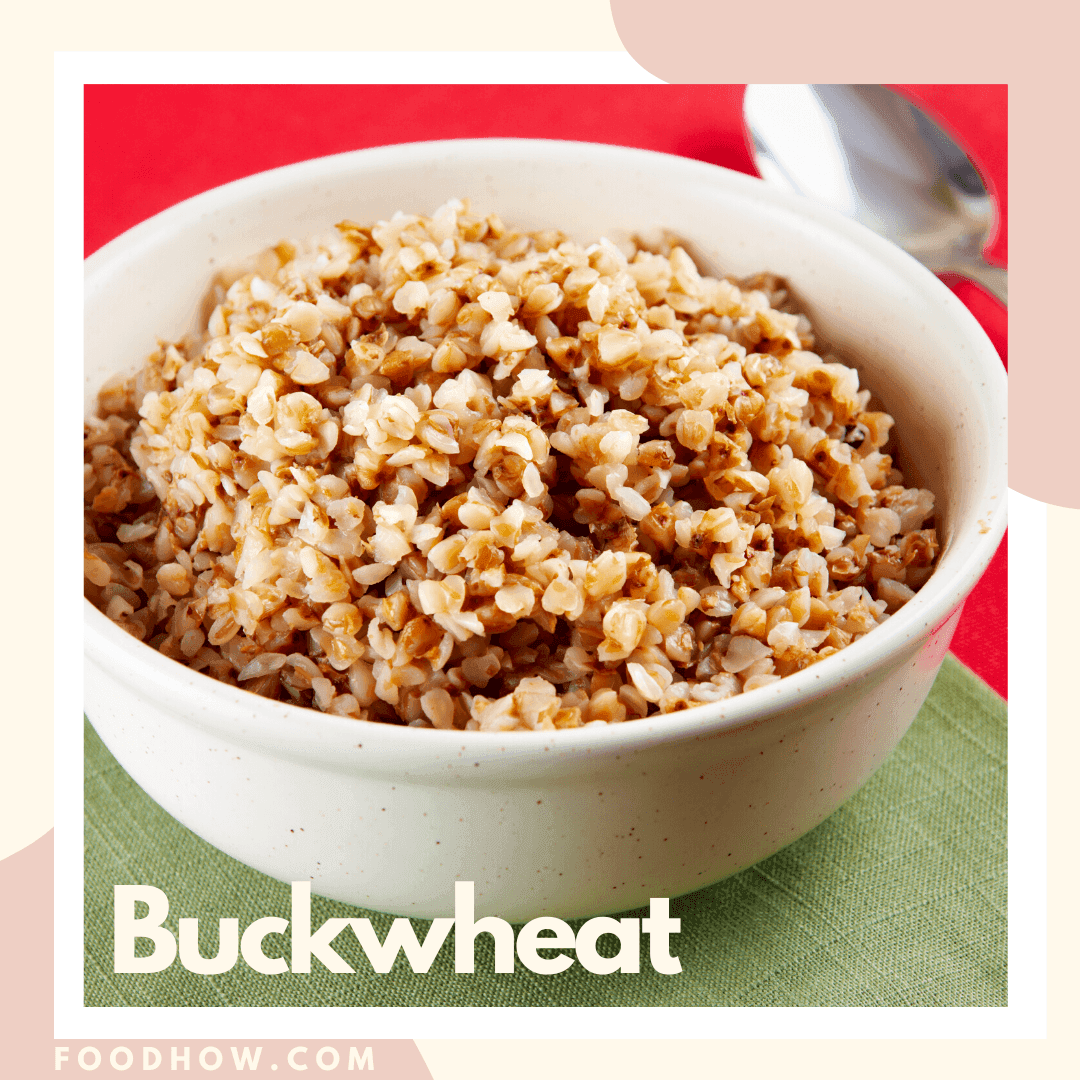
People have been growing buckwheat for around 8,000 years, and for this reason, it often gets referred to as the ancient grain.
However, the introduction of nitrogen fertilizer in the last century allowed farmers to increase their wheat and corn production, so buckwheat fell out of favor.
There is some confusion around the name ‘buckwheat,’ as there is no relationship at all with wheat.
Buckwheat is a little expensive compared to other grain alternatives. Still, as a source of quality protein, it is a bargain. Its triangle-shaped kernels are classed as a ‘pseudocereal,’ which means it comes from non-grass plants.
Buckwheat is technically a fruit seed rather than a grain. It is a food that offers high levels of nourishment and energy.
Buckwheat is high in protein. Indeed, it is a complete plant protein as it boasts every one of the 9 essential amino acids.
It also contains rutin, a compound extracted from leaves that is great for reducing blood pressure. Similarly, it will slowly bring down your blood sugar, which helps counter diabetes.
Another benefit of buckwheat is that it aids your digestive system by cleaning out and strengthening your intestines. If it is muscle growth that you’re looking for, buckwheat’s protein content will help you with that too.
Cooking Buckwheat
Buckwheat is dead simple to cook. Just rinse it; bring some water to a boil; add one part buckwheat per two parts water; add salt; bring it to a boil again; reduce heat and simmer until tender.
For a more oatmeal-like texture, use buckwheat flakes and cook them as you would cook your regular oatmeal.
Where Can You Buy Buckwheat Flakes?
Buckwheat is not difficult to find, and most stores should stock packets of buckwheat groats. It is usually located in the baking section near the rice or beans.
It also may be located with other international products. You may be able to bulk buy your buckwheat from natural food stores.
Of course, for buckwheat flakes, shopping online will avail you of a whole range of buckwheat products from flakes and raw groats to creamy buckwheat.
Check out a great selection of buckwheat groats and flakes here on Amazon.
Nutritional Benefits Of Buckwheat
Buckwheat’s glycemic index is low, and it has high content of copper, fiber, magnesium, and manganese. One cup of buckwheat (50g) will provide you with 7 grams of protein, 40 grams of carbs, and 155 calories.
Buckwheat and wheat are unrelated, so it has no gluten. Gluten is found in some cereals such as wheat, but seeds and flowering plants are gluten-free.
There is, however, a risk of cross-contamination if buckwheat is processed alongside wheat. Some people have a specific buckwheat allergy.
What Does Buckwheat Taste Like?
Buckwheat has a stronger flavor than other common grains. It is slightly earthy with a hint of a nutty taste to it. For some, the flavor of buckwheat could be a bit intense, especially if you have never tried it before. However, most people who try it will usually like it.
How Does Raw Buckwheat Compare To Kasha?
Traditional dishes are often made with toasted buckwheat in certain cultures. In the United States, when it is toasted, buckwheat is generally called kasha. So, if you are looking for raw buckwheat, you should avoid kasha.
You can tell if it is kasha or not by its dark reddish-brown color and its aroma of toasted nuts. Raw buckwheat tends to be light brown or green in color and without much of an aroma.
2. Millet
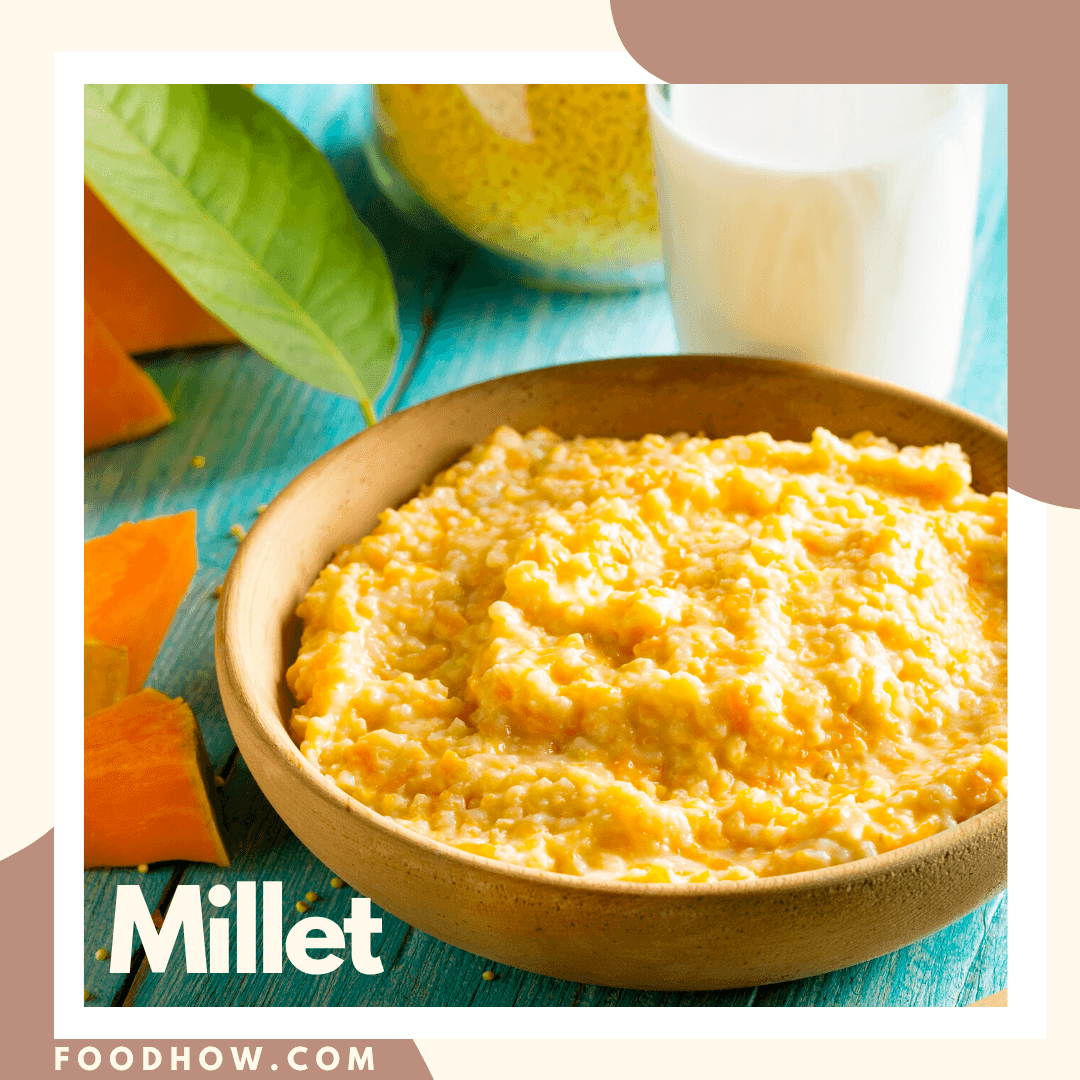
You may have considered millet for your bird table before, but it is worth much more than that. Millet is high in the world rankings of the most important grains. It is a staple for over a third of the world’s population and can be considered one of the supergrains.
Millet was one of the first-ever grains to be used domestically. It has been a food source in Africa and Asia for several millenniums. It is still widely used in these continents and is also popular in Eastern European countries.
What Does Millet Taste Like?
Millet can be placed on the sweeter end of the whole-grain scale. It is yellow-colored and has a mild corn taste to it with a mild, pleasing, and ever so slightly nutty flavor.
Because of its mild and pleasant taste, you can add millet to cakes, muffins, salads, stews, or bread, among other foods.
Millet is easily digestible and is gluten-free. Although it may not have gotten onto your food radar yet, you may want to reconsider that.
What Are The Nutritional Benefits Of Eating Millet?
As far as benefits go, millet is better for your heart and digestion than lots of other grains.
One reason for this could be because millet does not have the same component makeup as wheat, which is associated with many respiratory allergic reactions.
So, if you have any sensitivities to wheat, you should consider giving millet a try. It will also boost your levels of calcium, iron, potassium, magnesium, vitamin B, and healthy fats.
Cooking Millet
Millet is very simple to cook. Just add millet to water at a ratio of 1:3.5 and boil it until tender or a porridge-like consistency is achieved.
I would recommend rolled millet flakes for a melt-in-your-mouth texture.
Where Can You Buy Millet Flakes?
Millet is generally available in most local stores or natural food specialists. Quite often now, you can find bulk bins to take millet from in your own container. In larger stores, it may be located near the rice, and, of course, you will be able to buy it online.
However, finding rolled millet flakes can be more challenging. Luckily there are few options available here on Amazon.
3. Quinoa

Quinoa is a versatile, gluten-free grain that has a mild, earthy flavor to it. Although it is classed as a grain, quinoa is actually the seed from grain crops.
It is prepared and used the same way as grain, so this is maybe why it is referred to as one.
Quinoa has been used for thousands of years and was very popular with the Inca people who grew it at altitude in the Andes and referred to it as the ‘mother grain.’
Quinoa Nutrition And Benefits
Quinoa is a complete protein as it contains all of the essential amino acids. Due to the range of health benefits it offers, the UN classified it as a supercrop. It has plenty of fiber, magnesium, iron, and phosphorus; it is also gluten-free and easily digestible.
Forbes regards quinoa as being one of the foods that is the richest in protein. This makes it an ideal choice for those who are keen on building muscle. Introducing quinoa into your diet will help you get a toned body and will also help you lose weight as it keeps you feeling full for longer.
Quinoa’s fiber content is almost twice that of most other grains. This makes eating quinoa great not just for your digestive system, but also beneficial in the prevention of heart disease and the reduction of high blood pressure.
Foods that are high in fiber are also good for lowering glucose and cholesterol, so this makes quinoa a fantastic food choice for people at risk of diabetes.
It also provides you with a rich source of iron. Iron is essential for healthy red blood cells that supply your muscles and brain with oxygen.
So, eating plenty of quinoa as part of your balanced diet will give you the ability to keep working harder for longer, whether that be in the gym or in your office.
Quinoa also helps repair damaged tissue. It promotes the growth of new tissue thanks to the high levels of magnesium and lysine that it contains.
What Does Quinoa Taste Like?
Quinoa tastes a bit like brown rice and has a slightly nutty flavor. Rolled Quinoa flakes, however, do taste very close to oatmeal. Cooked quinoa is creamy, fluffy, somewhat nutty, and very delicious. It is very versatile and can be cooked in several different ways. It is an excellent alternative to oatmeal.
Cooking Quinoa
Quinoa is easy to prepare and cook. The preparation of quinoa is very similar to that of rice.
- It should be thoroughly washed prior to being cooked so that its bitter coating is removed.
- Add one cup of quinoa to 2 cups of water.
- Place it on the heat and bring it to a boil.
- When boiling, reduce the heat and simmer for around 15 minutes.
About now, the grains should have increased in size by about four times and should have an almost translucent appearance; the germ should also have separated from the seed.
When eating quinoa, the germ will have a bit of a bite to it, so if you want to replicate the texture of oatmeal, then you should try rolled quinoa flakes.
Where Can You Buy Quinoa Flakes?
Quinoa is a very popular buy in most health food stores where it can often be purchased in bulk. It may be a little more challenging to find rolled quinoa flakes in your local grocery store or supermarket.
However, I have found some really good rolled quinoa flakes here on Amazon.
4. Brown Rice
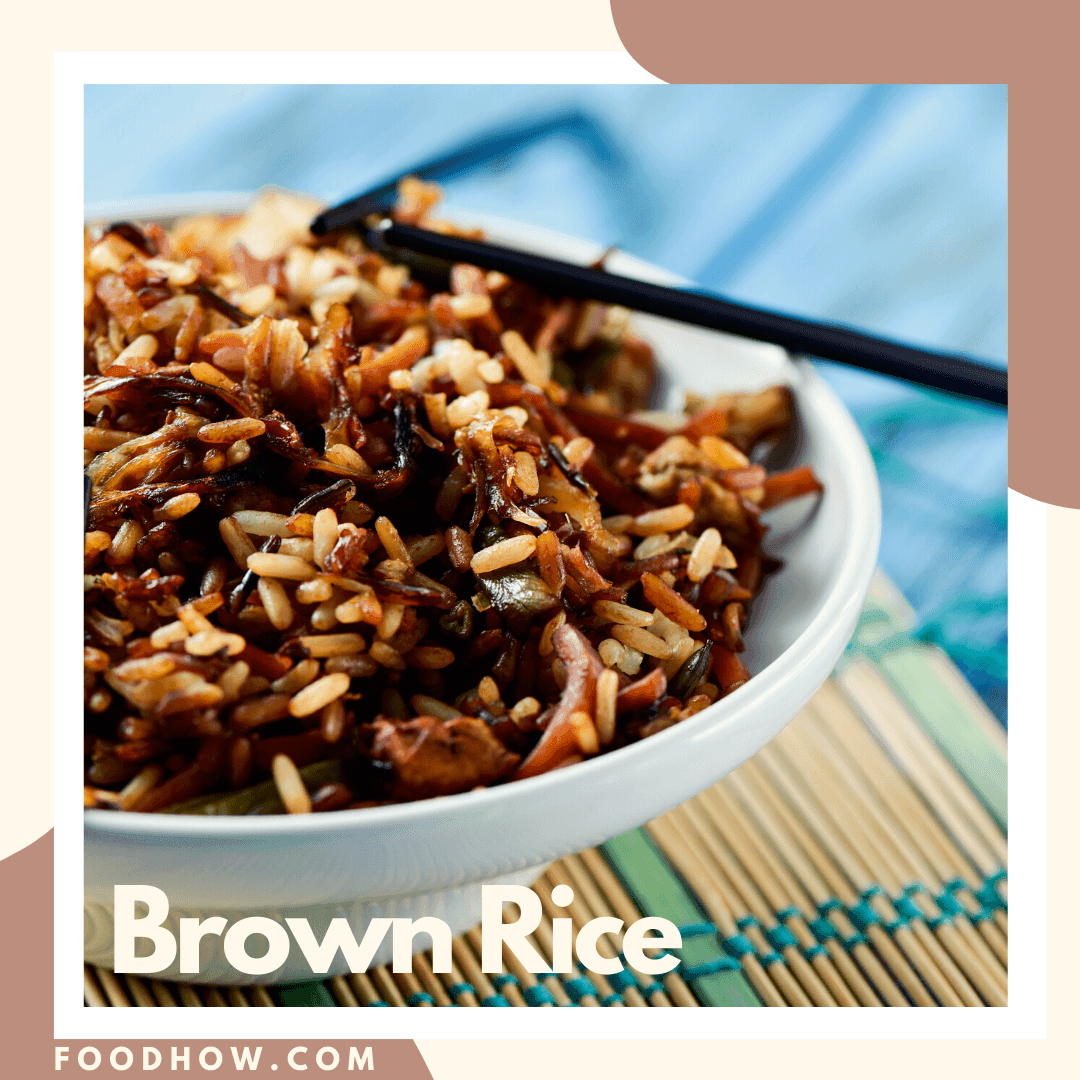
Rice may be the most popular food in the world, given that it is a staple in most countries and certainly the most populated ones.
However, brown rice is a different matter; this variety of rice is more associated with healthy eating than mass feeding. It is for the health benefits that many people prefer to eat brown rice.
Brown rice is considered to be a whole grain because it is not as processed as white rice, which has had its husk, bran, and germ all removed.
In comparison, Brown rice has only had its husk removed, leaving the healthy, nutritional bran and germ. The result is that brown rice retains a robust nutritional content of vitamins, minerals, and antioxidants.
How Nutritious Is Brown Rice?
Despite brown rice being a very simple food, it is packed full of nutrition. Compared to white rice, it has much more to offer in terms of nutritional value.
The carbohydrate content of brown rice and white rice may be the same, but that is it as far as nutritional similarities go. In every other nutritional category, brown rice overshadows white.
Brown rice also has an incredibly high content of manganese. This is not a very well-known mineral. Still, it plays a very important role in some key bodily functions such as metabolism, nervous system, bone development, wound healing, muscle contraction, and regulating blood sugar levels. By consuming a single cup of brown rice each day, you will maintain the required levels of this key mineral.
In addition to being a great source of vitamins and minerals, brown rice also provides your daily diet with powerful plant compounds. For instance, brown rice is a good supplier of phenols and flavonoids, which are a class of antioxidants that provide your body with protection against oxidative stress.
With only 216 calories per cup and the fact that it is packed with minerals and vitamins, brown rice has an excellent nutritional profile. It is high in fiber and gluten-free.
According to the USA Rice Federation, it contains zero levels of cholesterol or trans-fat and only trace elements of fat and sodium.
What Does Brown Rice Taste Like?
Brown rice has a stronger, nuttier taste compared to white rice. Brown rice flakes, however, do taste surprisingly similar to oats with just a slightly nuttier texture and chewier bite.
Cooking Brown Rice
The preparation and cooking method for brown rice is straightforward.
Rinse the rice well with cold water. Add one cup of rice to two cups of boiling water. Return the water and rice to boil, reduce the heat, cover, and simmer for about ¾ of an hour.
Brown rice takes a bit longer to cook than white rice does, and this is because white rice has had the high fiber bran layer removed along with the nutritious germ.
These layers may make the brown rice cook slower, but they also provide a chewy, nutty texture that white rice does not have.
Now, if you want your brown rice to cook into a creamy, mild porridge, then use rolled brown rice flakes.
Where To Buy Rolled Brown Rice Flakes?
Rolled brown rice flakes are quite rare and, therefore, difficult to find. The only place I have managed to find rolled brown rice flakes so far is here on Amazon.
5. Spelt
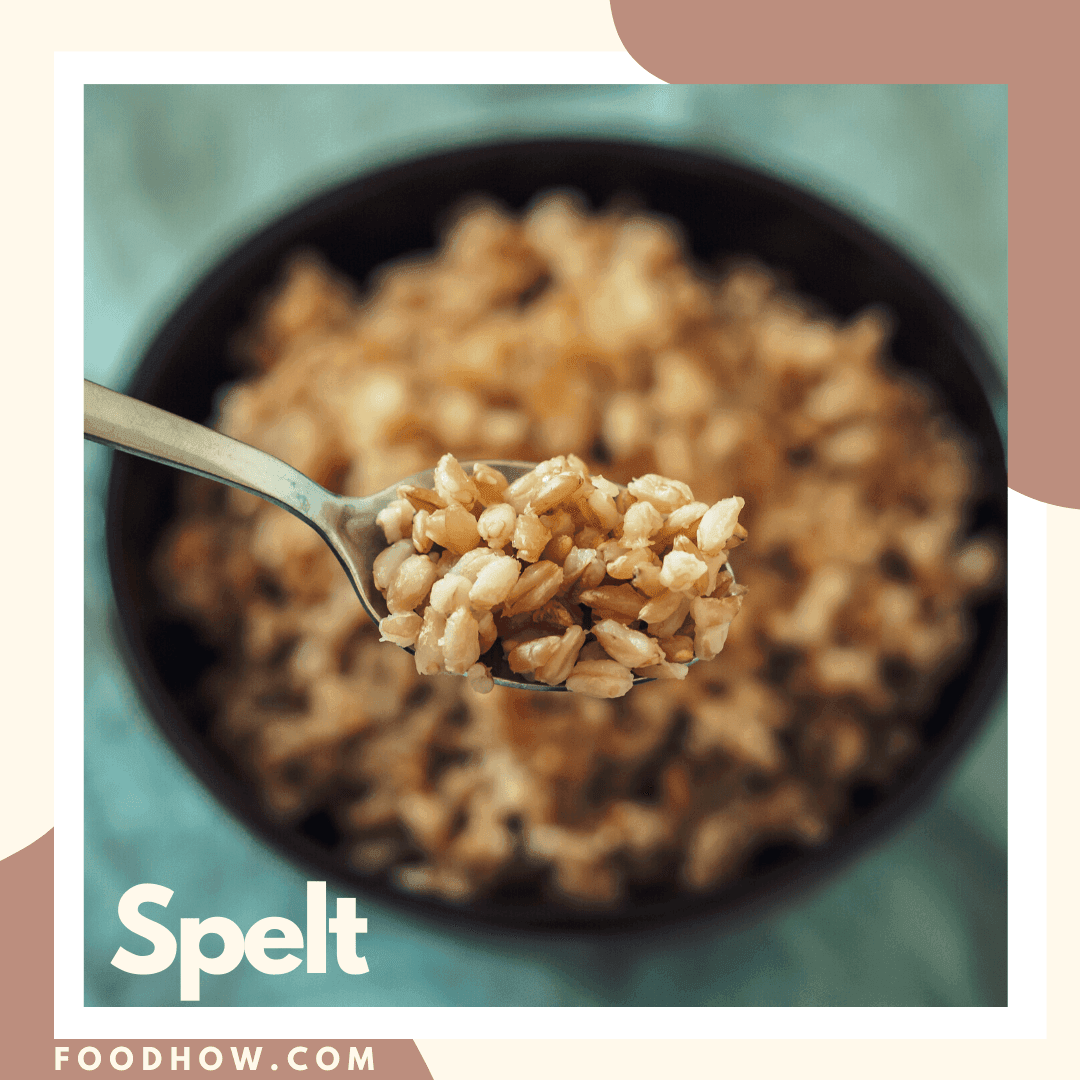
Spelt has a sweet, nutty flavor, and its grain is as much packed full of nutrition as it is full of taste. Spelt is a type of wheat that was a popular and essential crop in medieval Europe and even before then in other regions. Now, Europe is the only place where it is common to find it growing.
It was introduced to the United States in the late 1890s. However, the introduction of bread wheat in the 20th century led to Spelt being pretty much totally replaced.
Spelt Nutrition
Due to spelt being higher in water content than wheat, it makes it easier to digest. Spelt is also higher in nutrition than wheat.
Spelt has plenty of protein due to the naturally occurring amino acids it has. For every 100g of Spelt you consume, you are taking in about 15 grams of protein. Spelt also has a low level of phytic acids and a high concentration of fiber.
Spelt has plenty of nutritional content and healthy, active ingredients. It is a great choice for people with an active lifestyle, and, as it is a close relative of wheat. Spelt is a good choice for people who suffer from wheat allergies.
As already mentioned, Spelt has a high fiber concentration, making it good for promoting intestinal activity. This helps to rid the body of unwanted substances by flushing them out; one such substance is cholesterol.
Spelt also helps promote strong tissue as well as healthy hair, nails, and skin, due to its richness in silicic acid.
Other key minerals taken into your body by eating Spelt are calcium, potassium, iron, and magnesium. It also contains traces of fluorine, phosphorus, and silicon.
Why Would You Want to Eat Spelt?
- The main reason is that it tastes really good. As well as its health benefits, Spelt offers you a sweet, nutty taste and chewy texture not too dissimilar to barley, but without the sliminess that barley can have.
- Spelt stays nice and fluffy when cooked al dente.
- It is not totally gluten-free, but the gluten content is only moderate. Spelt is a type of wheat, so this should not come as a surprise.
- It is high in fiber and protein.
- It would be a healthy addition to your diet.
- It is quick and easy to cook.
Cooking Spelt
If you want to have nice and soft Spelt berries, you should try steaming them just like rice. Add one cup of Spelt to 3 cups of water or stock, cover, and steam for around 1 ½ hours.
For instance, if you wanted to add some berries to a salad, the method is different for a chewier and nuttier Spelt experience.
Cook it as you would a risotto by adding ½ cup of water at a time stirring it over medium heat until it evaporates. Keep adding another ½ cup just before the liquid totally evaporates. Your Spelt should be ready in around 30-40 minutes.
For a regular porridge-like texture, take 1 part rolled Spelt flakes and 2 parts boiling water or milk. Cover and simmer for 10-15 minutes. Serve and use topics as you would on your regular porridge.
Where Can You Buy Spelt Flakes?
Spelt is widely available in the bulk food sections of health food stores and organic grocery stores. However, rolled spelt flakes are mostly available online. You can get organic spelt flakes here on Amazon.
6. Barley
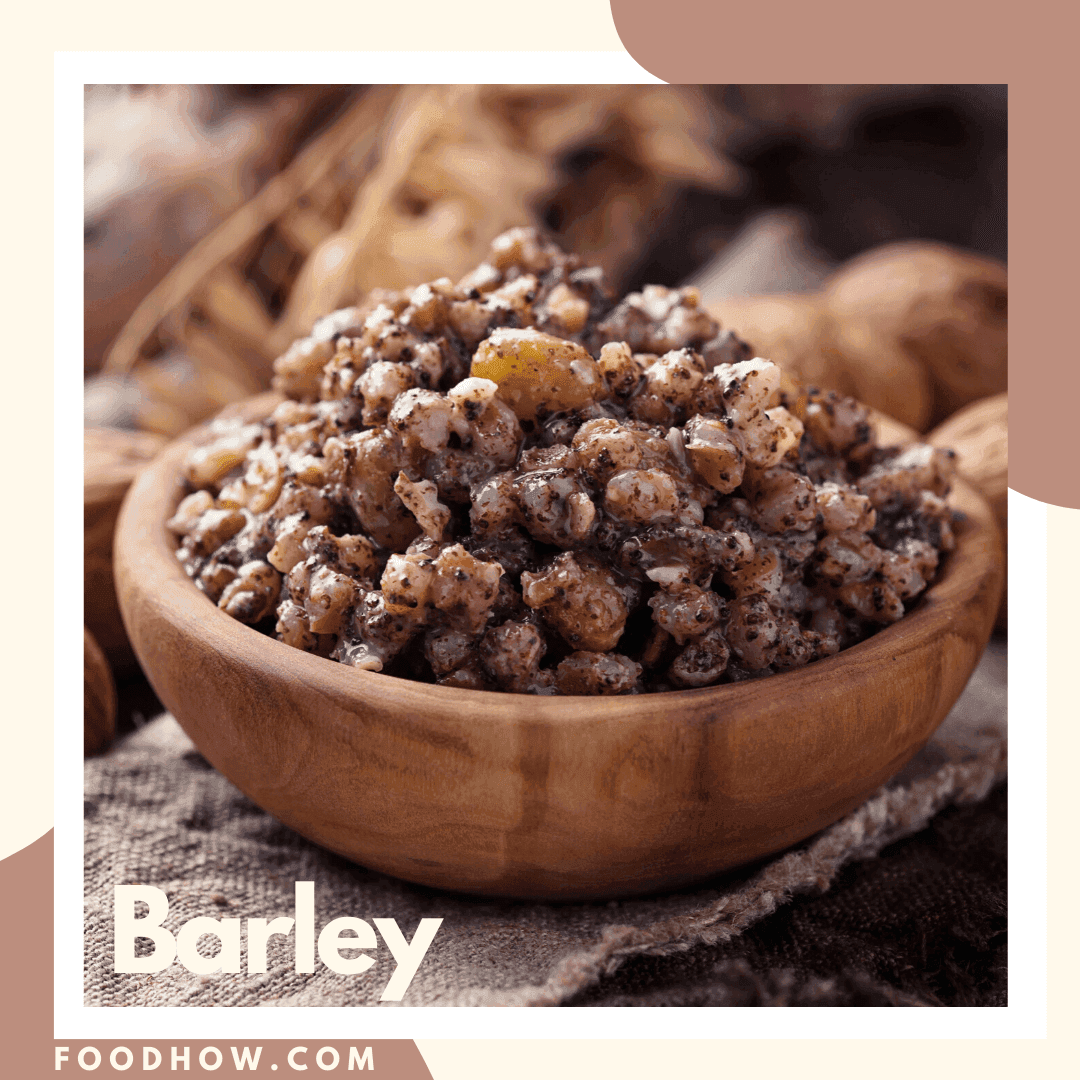
Barley is a grain that most people are familiar with. As well as being a key ingredient in many soups, barley also plays an important part in brewing beer. There are many other culinary uses for the grain than these two, however.
Barley is one of the first cereal crops to be cultivated, and it is still grown today all over the world in varying climates. This makes it an important staple of cuisine on a global scale. Its longevity as a food source is a testament to its health benefits.
Pearl barley is the most common form of this grain to be found in the United States; however, this does not technically qualify as a grain. Why? Because the outer bran layer has been removed.
Even so, pearl barley remains a very nutritious option even with the bran being removed. It is also not very expensive, it is in a bountiful supply and is easy to cook.
It is the perfect replacement for rice in many dishes. Barley has similar nutritional content to oatmeal, but it outshines oatmeal in its lower levels of fat and calories; and a higher concentration of dietary fiber. These make barley an even better choice than oatmeal.
Barley soup is probably the most popular and well-known way of eating barley, but you can also use it just like other grains such as couscous, quinoa, and rice.
Cooking Barley
You can cook barley the same way as you cook rice.
- Add one cup of barley to two cups of water or stock.
- Bring to a boil.
- Reduce heat, cover, and simmer for around 30-40 minutes.
- Remove it from the pan.
- Fluff it up a little and serve.
Rice cookers can also be used to cook barley, but add another ½ cup of water to the barley before cooking. Pre-soaking your barley will reduce the cooking time down by about 15 minutes, and this can be done for about one hour prior to cooking or be left to soak overnight.
Obviously, these are just rough timings, and actual cooking times depend on your individual appliances.
For Parley porridge, add 1 cup of Rolled Barley Flakes to boiling milk or water and reduce heat. Cover and simmer for about 10 minutes, stirring occasionally. Then remove from heat and let it stay for 2 minutes, then serve as you would serve regular oatmeal.
What Does Barley Taste Like?
When barley flakes are cooked, it has a nutty flavor and a very porridge-like texture quite similar to your everyday oatmeal. Barley can also be used as a neutral base for a number of dishes, including casseroles, stir-fries, protein bowls, and as a breakfast porridge substitute.
What Varieties of Barley are Available?
There are quite a few different types of barley. As I have already mentioned, groats are also known as ‘hull-less’ or ‘unhulled’ barley. This is barley in its unprocessed form, and it takes a longer cooking time than the more common, processed pearl barley.
Barley also comes in a ‘quick cook’ form, sometimes called ‘instant barley’ or as barley flakes. Both these will take around 10 minutes to cook and make an excellent oatmeal alternative.
Where Can You Buy Barley Flakes?
Barley is readily available in most grocery stores, and it is usually located alongside dried lentils and beans. In certain stores, you will also be able to purchase your barley in bulk.
Barley flakes are not as easy to find, and you can often miss them as they look very similar to rolled oats. Online may be your best option for purchasing rolled barley flakes. You can find some here on Amazon.
7. Amaranth
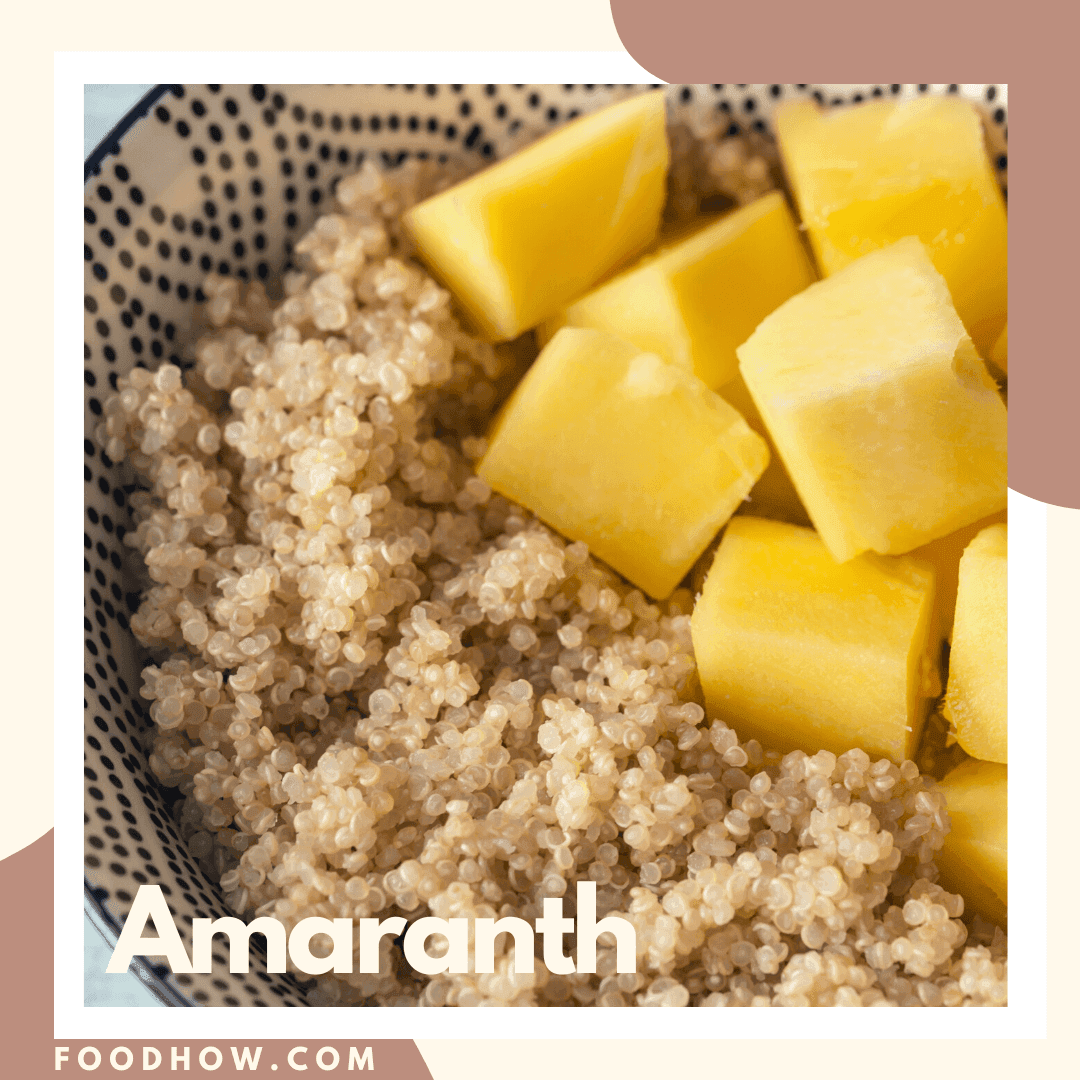
What, I can hear you collectively ask, is Amaranth?
This tiny seed’s name derives from the Greek language, where it means ‘everlasting’ or ‘one that does not whither.’ Amaranth is a tiny seed that contains similar nutritional values as quinoa and has more protein than oatmeal. This little seed is definitely punching above its weight!
Amaranth has been a popular crop in South America for a long time, from Mexico all the way down south to Peru. The Peruvians consider Amaranth to be their native crop.
There is evidence of the Aztec people cultivating and eating Amaranth between 6,000 and 8,000 years ago. The Aztec emperors would receive tributes annually in the form of Amaranth from their subjects.
From South America, Amaranth spread to Africa and some parts of central and southeast Asia. Nowadays, it is a popular food crop in China, Russia, Thailand, and Nigeria, and, of course, still is eaten widely in Mexico and South America.
Amaranth grows best at high altitudes. Hence it did not spread to the lower-lying regions of Africa and Asia.
However, it can adapt to moist and loose soil that is well-drained at pretty much any altitude and any climate. Once it has taken hold, Amaranth can even continue to thrive in regions that are short of water or during dry seasons.
It first saw an introduction to the United States in the 1970s, and it is still grown in many states, including Missouri, Nebraska, North Dakota, and even Long Island, New York.
Amaranth Is Highly Nutritious
Amaranth has over three times the amount of calcium as other grains. It also contains high levels of iron, magnesium, phosphorus, and potassium concentrations. Uniquely among grains, it contains vitamin C.
Although there have been few studies conducted looking at Amaranth’s health benefits, those that have been carried out show that there are some very important reasons you should incorporate it into your diet.
Amaranth is packed full of protein. In fact, about 13-14% of Amaranth is protein, which easily outstrips the protein levels of other grains. It is referred to as a complete protein. It contains the key amino acids, including lysine, which is either absent or exists in negligible quantities in many other grains.
Amaranth is sold on the streets of South America, much of the time as a ‘popped’ snack food. It has also become a traditional breakfast porridge in India, Mexico, Nepal, and Peru
If that were not enough, Amaranth is also gluten-free.
What Does Amaranth Taste Like?
Amaranth is neither savory nor sweet. It has a subtle, slightly nutty flavor. When amaranth flakes are well cooked, they taste very similar to oatmeal and also have a very similar texture.
Cooking Amaranth
Like most grains, Amaranth is very simple to cook.
- Add one cup of grain to six cups of boiling water (yes, it needs plenty of water).
- Bring this back to a boil while occasionally stirring.
- Boil around 15-20 minutes.
- Drain out the boiled water.
- Rinse thoroughly.
- Serve and enjoy.
Cooked Amaranth is a little different from other grains because it does not entirely lose its crunchiness when cooked. Instead, it softens but only enough to be edible. When you bite into it, you will feel the grains pop between your teeth.
If you want to cook Amaranth to a softer porridge-like consistency, you need to use rolled Amaranth flakes and cook them as you cook regular oatmeal.
Where Can You Buy Amaranth Flakes?
You can buy Amaranth in larger stores, supermarkets, specialist health food stores, and online. Rolled Amaranth flakes are also available in some health food stores, and you can also get them here on Amazon.
8. Rye
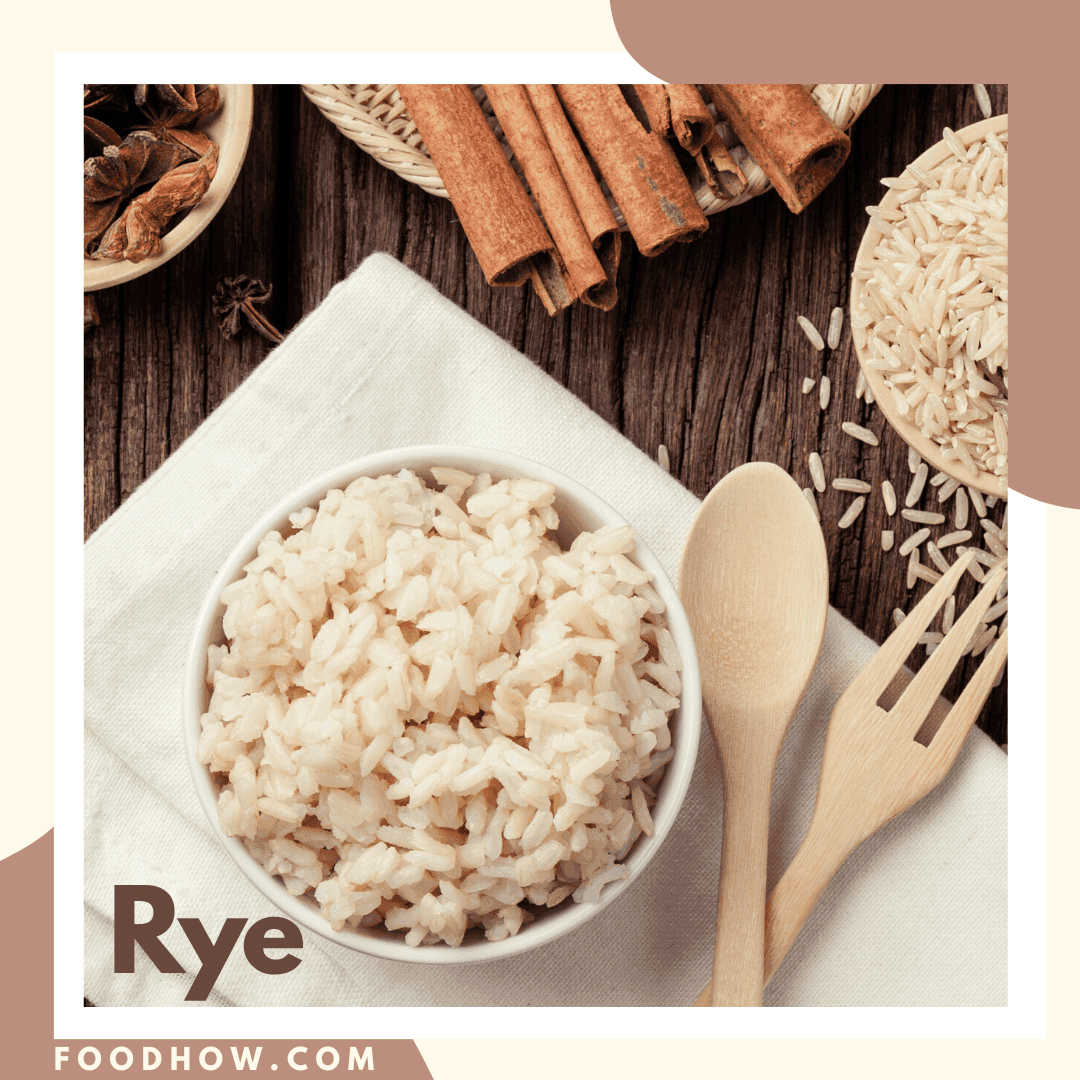
Rye not only has a great taste, but according to The World’s Healthiest Foods, it also ranks as one of the most healthy grains that you can eat.
Rye has a high concentration of manganese, one of the key minerals for maintaining good memory, and is also responsible for hastening the healing of wounds.
Its fiber content is also quite high and, although you may have noticed that this is a fact for most grains, it is still worth noting due to the absence of fiber in the majority of people’s diets. The fiber content in rye allows you to stay feeling full for longer. Therefore rye has weight-loss benefits if losing weight is one of your goals.
What Are The Nutritional Values of Rye?
Rye has more nutrition per 100 grams than most other grains. It also benefits from having a high content of fiber, manganese, iron, phosphorus, copper, and magnesium, which is terrific for preventing heart disease and diabetes.
One of the main benefits that attract people to rye is what it can do for them through its high content of fiber.
Eating rye will help maintain healthy blood pressure and levels of cholesterol. Its slow transition through the intestinal system means that it takes a long time to digest, so it will leave you feeling full for longer. It also makes it a healthy option for your gut.
Of course, these are similar benefits that other high-fiber foods offer you, such as chickpeas, black beans, chia seeds, and oats.
Is Rye Gluten-Free?
If it is gluten-free porridge you want for your breakfast or gluten-free bread for your lunch, unfortunately, rye is not the grain you’re looking for. Similar to wheat, rye contains gluten, although the amounts are considerably less. This is unfortunate for sufferers of diseases such as Celiac disease or those who have an allergic reaction to gluten.
On the positive side, unlike wheat, rye does not have any WGA (wheat germ agglutinin). This small lectin can cause inflammation and gives wheat its anti-insulin properties.
So, if you simply want to reduce your gluten intake as a lifestyle choice rather than for medical reasons, rye is a very good alternative to consider.
What Does Rye Taste Like?
Whether you are using rye berries or flakes, it has a sweet and nutty taste with that unmistakable hearty rye flavor to it.
Cooking Rye
- Mix your rolled rye flakes with some water or milk in a saucepan, then add a pinch of salt.
- Place the saucepan on medium heat and bring the mixture to a boil.
- Reduce the heat to low and simmer, uncovered, for around 3-5 minutes while stirring occasionally.
- When thickened to your desired consistency, remove the saucepan from the heat and allow it to cool a little before eating.
Where Can You Buy Rye Flakes?
Unlike Rye Berries, rolled rye flakes are not readily available at your average grocery store. However, you will be able to purchase it here on Amazon.
9. Triticale
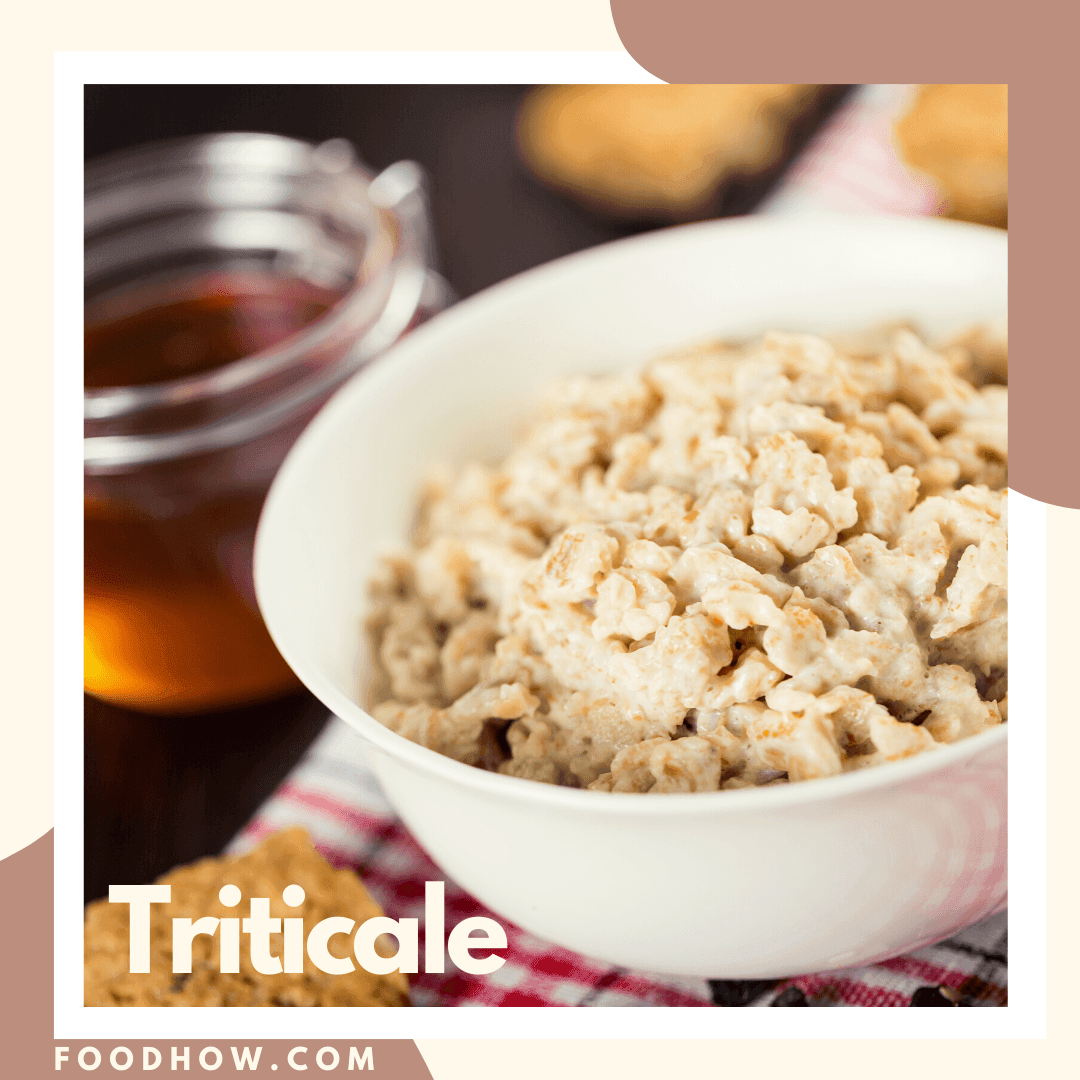
This is the new kid on the block as far as grains go; there are no millennia of history backing this one up.
This grain was only developed in 1875 by a Scottish botanist who crossed wheat with rye. They were attempting to create a grain that had the high yield and good baking qualities of wheat, mixed with the robustness of growth and high protein content of rye.
The initial attempts were not very successful, and they produced only sterile seeds. However, around half a century later, in 1937, a French researcher did succeed in producing a fertile hybrid of the two grains. This led to subsequent research projects into developing a new grain.
In the 1950s, there was a breakthrough with the development of the new grain, which was given the name Triticale. This name stemmed from the Latin genus names for wheat (Triticum) and rye (Secale).
Triticale is considered to have the best qualities of both grains, but its higher protein level compared to wheat is now starting to get Triticale quite a bit of attention.
What Is The Nutritional Value of Triticale?
Triticale was designed to be a high-fiber grain, and it certainly is. It also is an excellent source of thiamin and other essential minerals.
Due to its high levels of fiber and antioxidants, eating Triticale on a regular basis can help you keep your digestive system healthy.
It also aids in the regulation of blood sugar levels. However, if you are allergic to, or intolerant of gluten, Triticale is not suitable for you due to the wheat components that it contains.
Having 16% protein content, Triticale has a similar amount compared to rye, but it outperforms both rye and wheat in the number of amino acids it has. It also has plenty of lysine which is usually absent in grains.
What Does Triticale Taste Like?
As far as taste goes, Triticale has a nutty flavor quite similar to oats but has a slightly earthy and sour bite to it, which likens it to rye. Cooked triticale flakes will give you a very similar texture and taste to regular oatmeal.
Cooking Triticale
- Boil some milk or water, then add your rolled Triticale flakes.
- Reduce the heat to a low setting.
- Cover the pan and cook for around 10 minutes, occasionally stirring it.
Triticale can be served with honey, syrup, or brown sugar and some milk. You can also consider adding some fruit and, or nuts to enhance the taste and nutrition.
Where To Buy Rolled Triticale
It is only grown in small quantities in the United States so if you are trying to get your hands on some of it, your best option is to try specialist health food stores or look online.
It is even more challenging if you are looking for rolled Triticale flakes. Even on Amazon, there is only one listing; you can check it out here.
